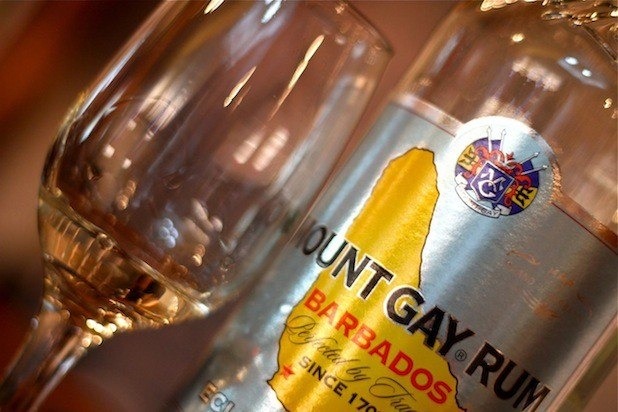Mount Gay Rum Factory Tour
"The rum that invented rum," Mount Gay's tagline is a bold, heady claim. But when you've been making rum since at least 1703, well, you get to be a little cocky — it's part of the deal. Talk about a deal, these are smooth operators, down to the guard at the factory gate, where this must be a well-practiced routine:
"How are you lovely people this morning?" he asks as you pull up.
"Good," you answer.
"Do you want to do better?"
"Yes."
"Well, you've come to the right place."
According to the guide, four different families have owned the plantation since its beginnings. Mount Gay's name supposedly comes from a Sir John Gay Alleyne. The story goes that after his death, Alleyne's friend, John Sober who had employed him at the then named, Mount Gilboa Plantation/Distillery, had the name changed to honor him. Mount Gay would have been Mount Alleyne Rum, but one of the island's plantations already had that name. This is just one of several interesting tidbits you learn while touring the Mount Gay Rum factory in Bridgetown, Barbados, where the blending and bottling occurs. Read on for highlights of the tour, and a slideshow with drink recipes.
The Barrels
Mount Gay makes five different types of rum. The rums get their color and flavor from previously-used, Kentucky white oak bourbon/whiskey barrels. "Jack Daniels?" you ask. "I can't say," the guide responds, but the math adds up.
The Rum
About 70% of the market for the rum is attributed to the US. Of their rums, the guide noted that the Eclipse is the bestseller internationally, best used in rum and coke, and rum punches. It's also known as cooking rum, used for example, in wedding cakes. The Eclipse Silver is the bestseller outside the island, known, the guide said, as "the poor man's vodka." Mount Gay also makes a Rum Brandy, but it's labeled as sugarcane rum outside the island. The suggested mixer? Ginger ale and Sprite.
Going Upscale
Of course, the 1703 isn't meant to be mixed with anything. You drink that straight or you don't drink it. And in the high-end vein, with Remy Martin's increased involvement with the company, expect to see some bottle design optimization over the next year.
Process
Rum comes from sugarcane harvested between February and June when the sap reaches the highest point. The sugarcane is cut at the stem, the leaves are stripped, and the cane is bundled. At harvest's end, there is a celebratory festival called Crop Over.
After being cut, the stems are pulped to release the sap, which is boiled to produce molasses. The molasses is fermented at the St. Lucy distillery and decanted in 'lofts,' then matured in oak vats and mixed with filtered water. The sugars convert into alcohol during a 48 hour period.
Alcohol is produced by a single distillation, which produces a 97% alcohol distillate, and a second distillation in small batches using a copper pot still. The second distillation results in an alcohol of only 86%.
The rum is then matured in 200-litre barrels that are lightly baked at the distillery. When the two distillates have matured, the master blender combines them.
Quick Fact
There are more than 1,500 rum shops on the island of Barbados.
